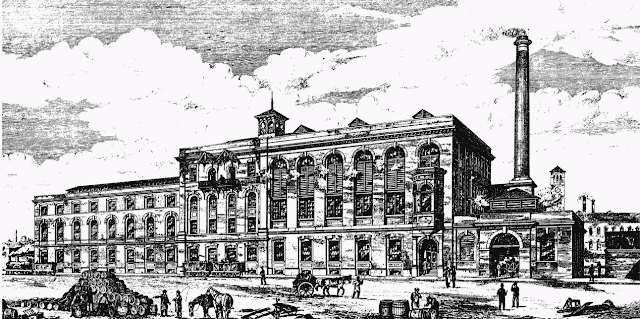February 13, 2018
It isn’t true that all geologists drink beer. But many do,
and I’m one of them. Today I’m going to talk about the
intimate connection between geology and beer.
Beer is mostly water, and water chemistry has everything to
do with beer styles. And water chemistry itself depends mostly on the kinds of
rocks through which the water flows. You know about hard and soft water – hard
water has more dissolved chemicals like calcium and magnesium in it, and while
salts of those chemicals can precipitate out of hard water, making a scum on
your dishes, they also can be beneficial to development of bones and teeth. In
the United States, the Midwest and Great Plains have some of the hardest water
because of the abundant limestones there, and in Great Britain, southern and
eastern England have harder water than Scotland for similar reasons.
But it wasn’t limestone that made Burton-upon-Trent a center
of brewing in the 19th Century, when it was home to more than 30
breweries. The water there is rich in sulfate which comes from gypsum, calcium
sulfate, in the sandstone underlying the region. Those sandstones are Permian
and Triassic in age, representing a time when much of the earth was arid. Those
dry conditions allowed gypsum to crystallize in the sediments. Gypsum is much
more soluble than limestone, and the slightly acidic waters of Burton help with
that. Burton water has ten times the calcium, three times the bicarbonate, and
14 times the sulfate of Coors’ “Rocky Mountain Spring water” in Colorado. That certainly
makes Coors’ Burton brewery product rather different from that made in
Colorado.
In fact, the addition of gypsum to beer is called
“Burtonization.” This increases the hops flavor, but more important to history,
sulfates act as preservatives in beer, enough so that Burton brews of pale ales
could survive the long trip to British India, giving us the India Pale Ale
style of beer. Not from India, but brewed with sulfates derived from gypsum in
Britain’s rocks.
That slight acidity in Burton’s water depends on the calcium
and magnesium content, and also lends itself to extracting sugars from malted barley
in the mashing process. Calcium and magnesium also help yeast to work its
magic. Today, home brewers can buy “Burton Water Salts” to imitate the product
from England.
Less hopp
 |
| Truman, Hanbury, Buxton & Co., Black Eagle brewery, Derby Street, Burton-upon-Trent, in 1876, from University of London |
Mark as Played
Popular Podcasts
Stuff You Should Know
If you've ever wanted to know about champagne, satanism, the Stonewall Uprising, chaos theory, LSD, El Nino, true crime and Rosa Parks, then look no further. Josh and Chuck have you covered.
Dateline NBC
Current and classic episodes, featuring compelling true-crime mysteries, powerful documentaries and in-depth investigations. Follow now to get the latest episodes of Dateline NBC completely free, or subscribe to Dateline Premium for ad-free listening and exclusive bonus content: DatelinePremium.com
The Breakfast Club
The World's Most Dangerous Morning Show, The Breakfast Club, With DJ Envy, Jess Hilarious, And Charlamagne Tha God!